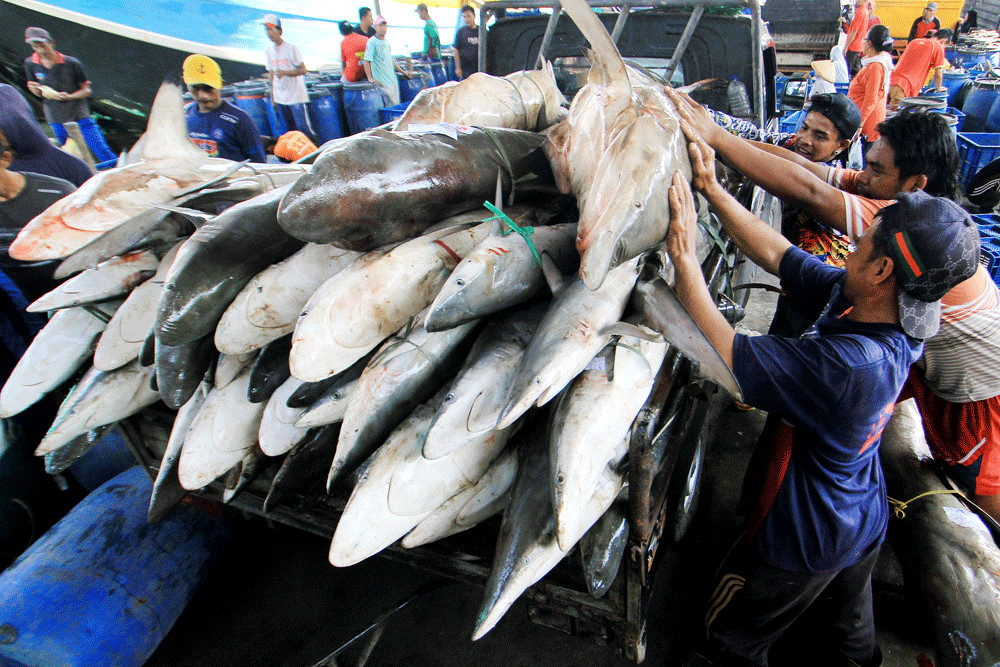Popular Reads
Top Results
Can't find what you're looking for?
View all search resultsPopular Reads
Top Results
Can't find what you're looking for?
View all search resultsLimit number of silky sharks caught, says LIPI
Supported by the United States Agency for International Development (USAID), he said the NDF recommended that the quota for silky sharks should be 80,000 this year, with a minimum length of 2 meters and a weight of 50 kilograms.
Change text size
Gift Premium Articles
to Anyone
T
he Indonesian Institute of Sciences (LIPI) has suggested that the number of silky sharks (Carcharhinus falciformis) caught in Indonesian waters should be restricted to prevent the species from becoming extinct.
"Silky sharks can still be caught but the number should be limited," LIPI's oceanography division head, Dirhamsyah, said on Monday at the launch of its Non-Detriment Finding (NDF) research document concerning the sustainable management of silky sharks.
Supported by the United States Agency for International Development (USAID), he said the NDF recommended that the quota for silky sharks should be 80,000 this year, with a minimum length of 2 meters and a weight of 50 kilograms.
The NDF is a science-based risk assessment document in which the vulnerability of a species is considered in relation to how well it is managed. According to the International Union for Conservation of Nature (IUCN), at least 31 percent of the world’s shark population was threatened with extinction. Meanwhile, based on 2015 data by the Food and Agriculture Organization (FAO), Indonesia is one of the countries with the highest exploitation rates of sharks in the world and accounted for around 13 percent of global shark production.
Dirhamsyah said that 60 percent of all shark catches in Indonesia were requiem sharks, with at least 54 percent being silky sharks.
He added that the NDF document was a risk analysis of the sustainable management of the shark listed in Apendix II of the Convention on International Trade in Endangered Species (CITES) based on biological, fishery and management aspects.
CITES has included 12 shark species in Apendix II, which is not necessarily threatened with extinction, but may be threatened with extinction if the species are not put on the protection list. Of the 12 species, nine are in Indonesia.
“It [the NDF document] also recommends the improvement of the production record and management as well as the habitat conservation and breeding of the silky shark. Moreover, it is also concerned about the practice of shark finning,” he said.
USAID Indonesia’s deputy director of the environment office, Jason Seuc, said it was collaborating with the LIPI to complete the recommendation concerning a scientific-based quota in a bid to ensure the sustainability of the wild population of silky sharks.
"We hope that NDF policies for sustainable shark production can increase awareness and conservation efforts, curtail illegal trade, and restore the population of this species," he added. (das/jun)










